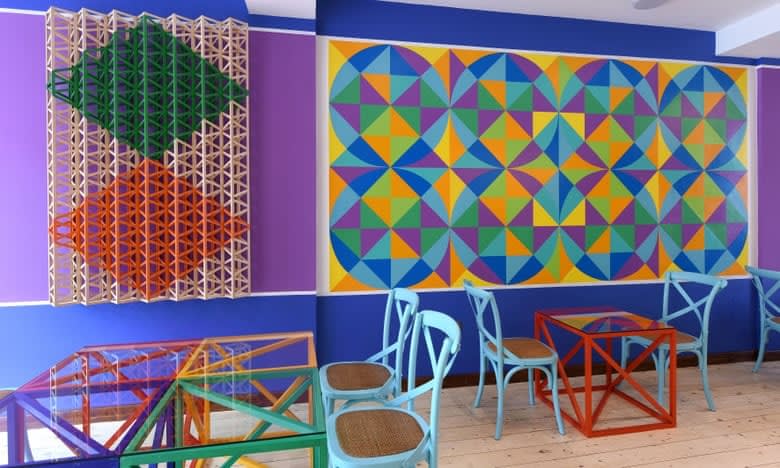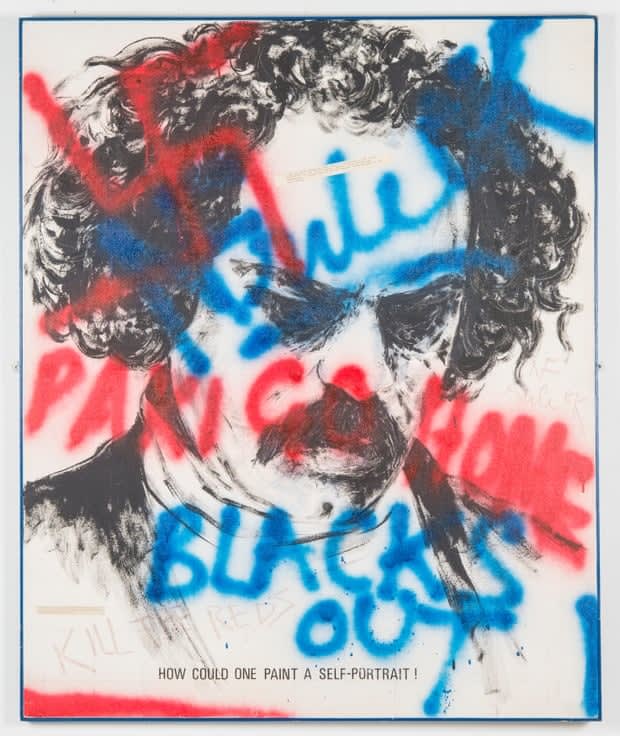He's written letters to the prime minister, joined the Black Panthers and spent a lifetime on art that can provoke, delight and be climbed on. Now, at 84, Araeen has opened a restaurant.
'You won't find anything interesting in my life. I'd rather talk about the work," says Rasheed Araeen. It is quite the understatement. The 84-year-old Karachi-born artist is no stranger to incident. "My life in Britain has been my struggle against the establishment. It took many forms - within art, outside art, in writing, in performances, in writing letters to the prime minister," is his own pithy summation.
He first wrote to Tony Blair after "there were ugly things spoken about the Muslims" following the July 2005 bombings in London. "One of the points they kept making was that Muslims were against modernism. They were backwards, uncultured, uncivilised. I wrote and said, 'Here is an example of what Muslims have contributed to British modernism'."
The contributions he drew Blair's attention to were his own. Araeen's art has been part of the British cultural landscape for half a century, from the painted lattice reliefs nominated for the John Moores prize in 1969 to Rhapsody in Four Colours (2018), a 35-metre sculpture in the Aga Khan Centre in King's Cross, London.
He later wrote to David Cameron. Blair's office acknowledged the letter, Cameron's did not. Will he write to Boris Johnson? "I'm fed up. I've stopped writing letters."
Instead, he's turned restaurateur. Araeen's latest artwork will serve you masala chicken sausages, crisp pakoras and squares of spongy dhokla. Titled Shamiyaana, it is a restaurant reimagined as art: a small cafe/bar in the north London neighbourhood of Stoke Newington.

At Araeen's studio in Cricklewood, assistants work on new geometric paintings. A stroke a few years ago has left speech and movement difficult for him, but a recent major retrospective that travelled from the Netherlands, to Newcastle, Geneva and Moscow has boosted demand for the artist's work.
When he was a child in Karachi, Araeen's mother had him trace flowers on to cloth for her embroidery, and gave him clay to play with. She also taught him to cook. While studying as a civil engineer, he discovered the modern library of the United States Information Service, "a place of cool, luxurious comfort". There he joined the university's art club, and read about Frank Lloyd Wright. Art and modern architecture held him in a double grip. He developed avant garde tendencies, making sculpture from found metal scraps, drawing the motion of a moving hula-hoop or the geometric roofs of Hyderabad from above.
He felt himself a poor fit in Pakistan. "Nobody could understand what I was doing," he says. His contemporaries were still bound up with figurative painting, and in the early 60s he moved to London.
There, inspired by sculptor Anthony Caro, he developed a style that resolved his interests in engineering, architecture and social engagement. The simple, painted cube tables in Shamiyaana first appeared in 1968 as sculptures inviting play. In Zero to Infinity, 100 of these blue lattice cubes are installed in a neat grid that gallery visitors are invited to rearrange in any way they please. Araeen proposed the work to the ICA in 1968, but only received a commission to realise it fully in 2004.
A version of Zero to Infinity is in the Tate's collection, though he grumbles that the gallery has killed off the work's participatory aspect. Installed in the Tanks two years ago, "they brought it out and invited their own selected people to play for half and hour. But they had to put gloves on," he says. "They won't allow the audience to touch it." He has no problem with structures being broken: art is in the interaction between idea and audience, he thinks, not in the physical object. It is one of many beliefs that put him at odds with museums' urge to preserve, and with an art market that prizes saleable objects.
A deep expression of Araeen's participatory art, Shamiyaana was first commissioned for the Documenta 14 exhibition in Athens in 2017, stationed in Kotzia Square when Greece was at the centre of the migration emergency. Shamiana is the Bengali word for a wedding tent: in Athens, the cafe was an open canopied structure offering free meals. "People of different languages got together on the same tables," says Araeen. "They couldn't speak, yet they would manage to communicate while eating together."
As a younger man, cooking and talking were fundamental to Araeen's political engagement. His art was praised, yet in late-60s London, as an artist from Pakistan, no gallery would work with him.
In the early 70s, he joined the British Black Panthers and David Medalla's Artists for Democracy. Medalla's organisation gathered on Sundays to talk about art. "I used to cook for them," recalls Araeen. "I spent years listening to David. Also in the Black Panthers - when we had a meeting I would quietly sit down and listen. Until 1975, I was a listener, not a talker."
But that year was transformative. Araeen increasingly turned to text to express his ideas, starting with an open letter to the Guardian about modernism and imperialism. Later that year, his influential Preliminary Notes for a Black Manifesto outlined the cultural impact of colonialism and the urgent need for a way forward: "While the historical process in the west provided western artists with necessary incentives or driving forces for their creativity, colonialism suppressed the developments of indigenous art and culture in the third world by preventing the historical development of the productive forces of its peoples."
Araeen and poet Mahmood Jamal launched the journal Black Phoenix in 1978. "I said to myself that I couldn't be the only person aware of these ideas: there must be many, so we needed a magazine, particularly for people writing to us from the third world." Black Phoenix published only three editions but it laid the foundation, a decade later, for Third Text, a groundbreaking journal addressing art, ethnicity and post-colonialism.
Araeen's art also took a political turn, in works such as the 1977 performance piece Paki Bastard (Portrait of the Artist as a Black Person) and collages linking consumer culture with police violence and imperious foreign policy. He lobbied for British galleries to engage properly with artists from developing nations rather than keeping them apart, categorised as "ethnic".

Eleven years after first proposing it to the Arts Council, he succeeded in staging The Other Story: Afro/Asian Artists in Post-War Britain at London's Hayward Gallery in 1989. Looking over the list of the artists he featured - among them his contemporary Frank Bowling and younger talents Sonia Boyce and Lubaina Himid - it is striking how long it would take the art world to afford them due attention.
Araeen continues to make the case for an inclusive history of modern art, or what he terms "the whole story". This, in part, is what he means when he speaks about his struggle against the establishment. The need for recognition bestowed it, balanced with the distaste for what it represents.
With Shamiyaana, Araeen takes a step away from that struggle. "I want to dedicate myself to the community," he says. "That's why I set up the restaurant. Through the restaurant I can have a direct relationship with my audience. I don't have to go to galleries. I don't need the institutional legitimisation of my work, because when people come there, their presence itself is legitimisation."
• Shamiyaana, London, is open Tuesdays to Saturdays from 5.30-10.30pm.
CLICK HERE FOR LINK TO ARTICLE


